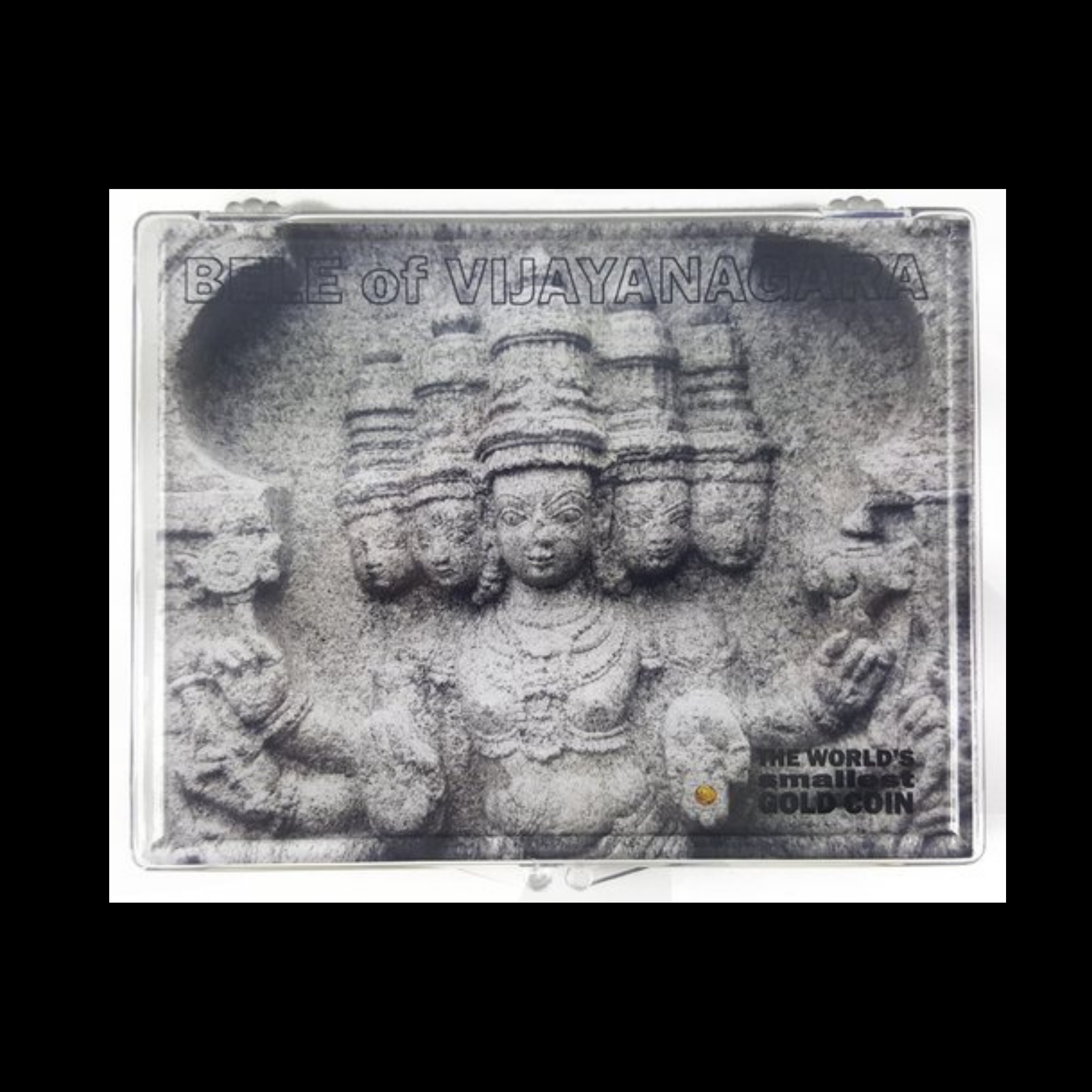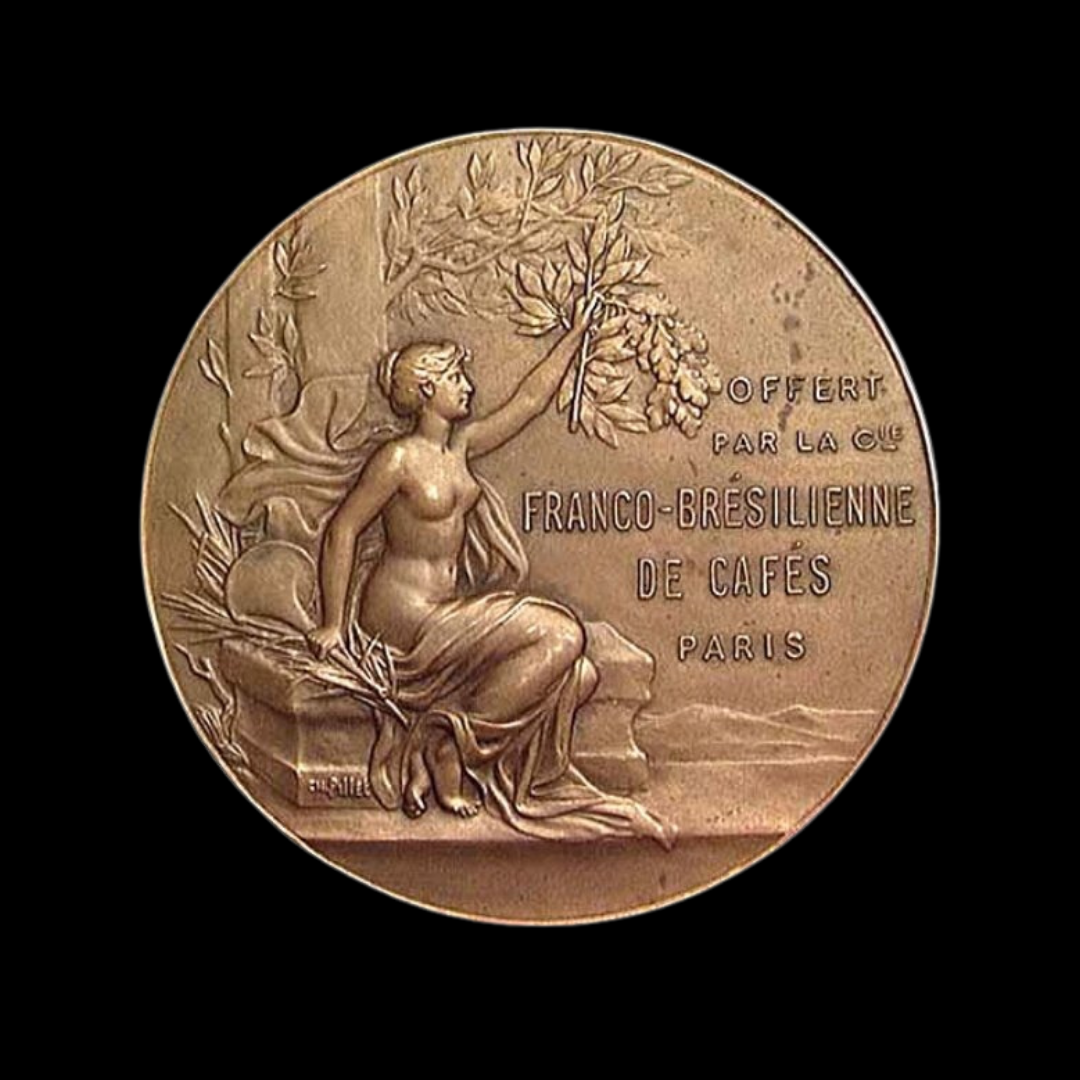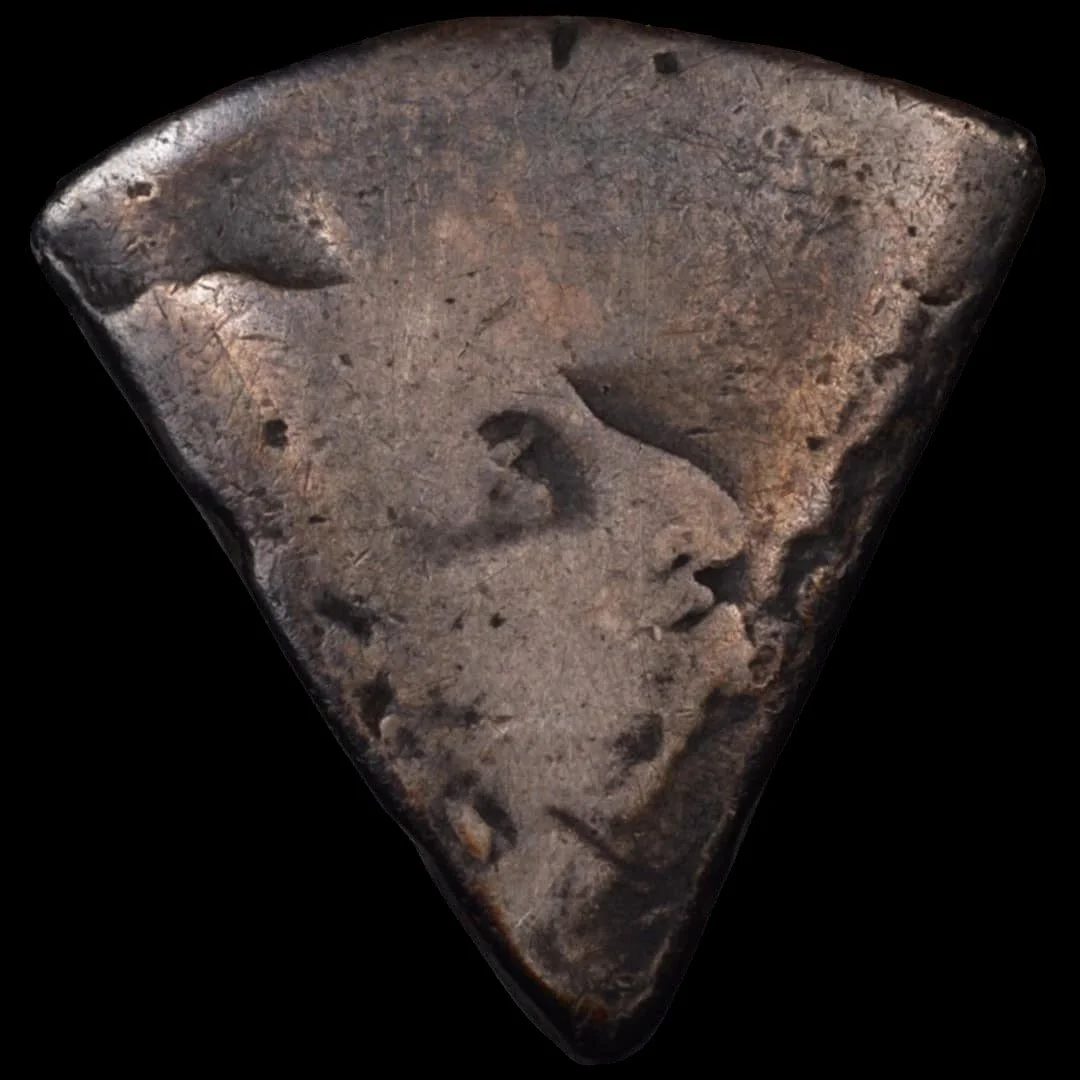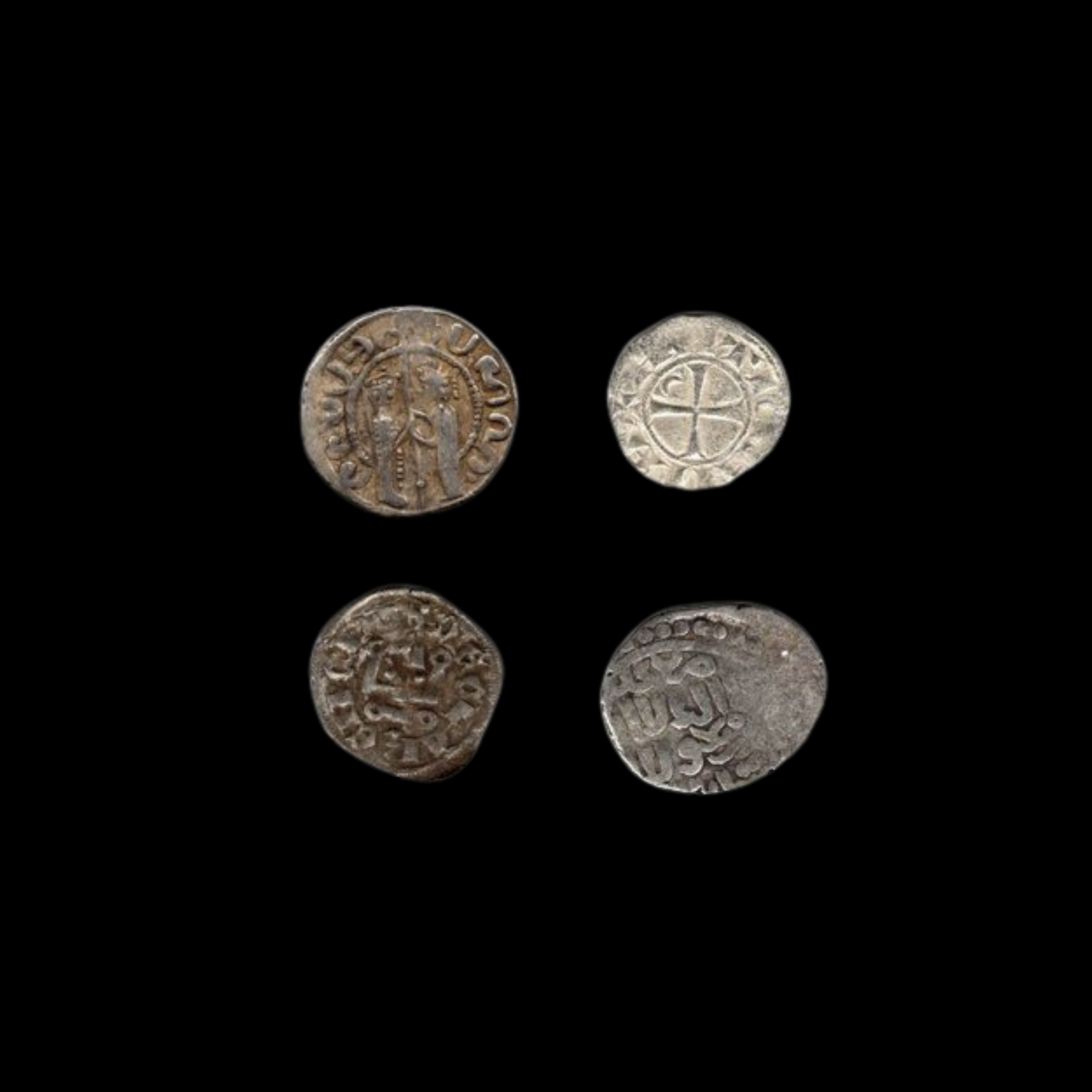 Image 1 of 4
Image 1 of 4

 Image 2 of 4
Image 2 of 4

 Image 3 of 4
Image 3 of 4

 Image 4 of 4
Image 4 of 4





Spanish Silver 8-Real Fragment from the Vliegenthart Shipwreck (about 290 years ago)
The coins shown are representative examples of the grade and type, but not the actual specimens for sale. For details on NGC’s grading standards and definitions, please refer to our NGC Grading page.
This silver coin fragment is part of an 8-real piece (commonly known as a "piece of eight") minted during the reign of Philip V of Spain in 1735. Recovered from the wreck of the Dutch East India Company ship Vliegenthart ("Flying Heart"), which sank in 1735, this coin represents the global trade networks and maritime commerce of the early 18th century.
Coin Description:
Front side: Likely features the Spanish royal coat of arms (though partially visible due to fragmentation), with inscriptions mentioning Philip V and his titles.
Back side: Probably displays the Pillars of Hercules design with a banner reading "PLUS ULTRA" and the mint mark indicating where in Spanish America it was produced.
Technical Details:
Silver composition (typically 93.1% pure)
Denomination: 8 Reales (primary Spanish colonial trade coin)
Weight: Partial, due to fragmentation
NGC Certified as an authentic shipwreck recovery item
Minted in 1735 under Philip V of Spain
Condition: Shipwreck effect, partial specimen
Provenance: Recovered from the Vliegenthart shipwreck
Historical Significance: This coin fragment was aboard the Dutch East India Company vessel Vliegenthart when it sank in a storm off the coast of the Netherlands in February 1735, shortly after beginning its voyage to the East Indies. Spanish 8-real coins were the world's most widely used trade currency in the 18th century, accepted across Europe, the Americas, and Asia. The presence of these Spanish coins on a Dutch trading vessel illustrates how these pieces transcended national boundaries to become a de facto global currency. Shipwreck coins like this provide tangible evidence of the maritime trade networks that connected early modern economies and the risks faced by those who traveled these routes.
The coins shown are representative examples of the grade and type, but not the actual specimens for sale. For details on NGC’s grading standards and definitions, please refer to our NGC Grading page.
This silver coin fragment is part of an 8-real piece (commonly known as a "piece of eight") minted during the reign of Philip V of Spain in 1735. Recovered from the wreck of the Dutch East India Company ship Vliegenthart ("Flying Heart"), which sank in 1735, this coin represents the global trade networks and maritime commerce of the early 18th century.
Coin Description:
Front side: Likely features the Spanish royal coat of arms (though partially visible due to fragmentation), with inscriptions mentioning Philip V and his titles.
Back side: Probably displays the Pillars of Hercules design with a banner reading "PLUS ULTRA" and the mint mark indicating where in Spanish America it was produced.
Technical Details:
Silver composition (typically 93.1% pure)
Denomination: 8 Reales (primary Spanish colonial trade coin)
Weight: Partial, due to fragmentation
NGC Certified as an authentic shipwreck recovery item
Minted in 1735 under Philip V of Spain
Condition: Shipwreck effect, partial specimen
Provenance: Recovered from the Vliegenthart shipwreck
Historical Significance: This coin fragment was aboard the Dutch East India Company vessel Vliegenthart when it sank in a storm off the coast of the Netherlands in February 1735, shortly after beginning its voyage to the East Indies. Spanish 8-real coins were the world's most widely used trade currency in the 18th century, accepted across Europe, the Americas, and Asia. The presence of these Spanish coins on a Dutch trading vessel illustrates how these pieces transcended national boundaries to become a de facto global currency. Shipwreck coins like this provide tangible evidence of the maritime trade networks that connected early modern economies and the risks faced by those who traveled these routes.















